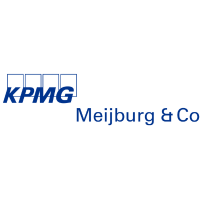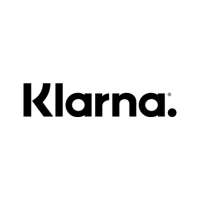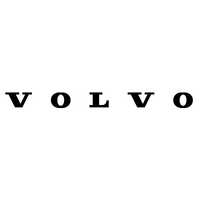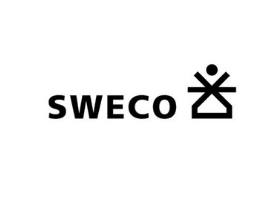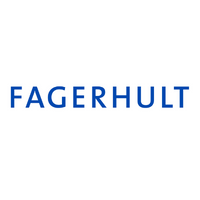Patrons
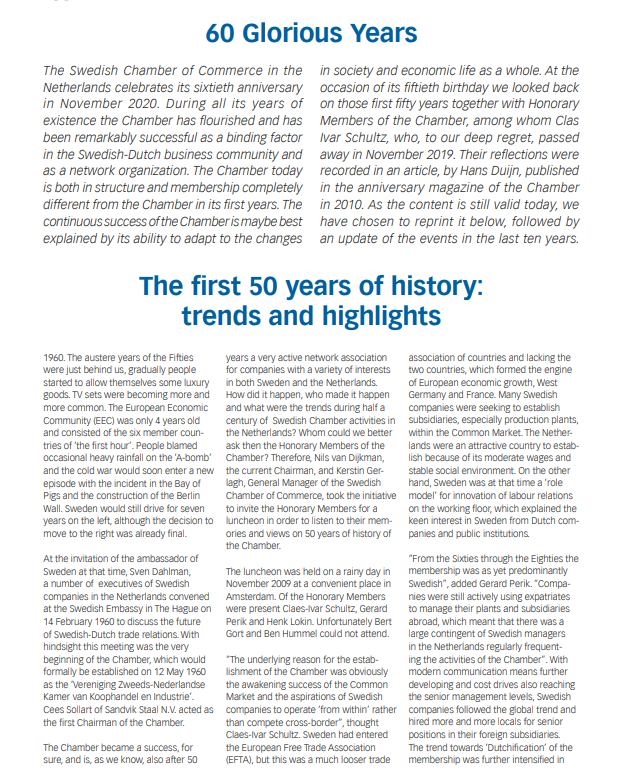
60 Glorious Years
By: Hans Duijn
During all its years of existence, the Chamber has flourished and has been remarkably successful as a binding factor in the Swedish-Dutch business community and as a network organization. The Chamber today is both in structure and membership completely different from the Chamber in its first years. The continuous success of the Chamber is maybe best explained by its ability to adapt to the changes in society and economic life as a whole.
At the occasion of its fiftieth birthday, we looked back on those first fifty years together with Honorary Members of the Chamber, among whom Clas Ivar Schultz, who, to our deep regret, passed away in November 2019. Their reflections were recorded in an article, published in the anniversary magazine of the Chamber in 2010.
As the content is still valid today, we have chosen to reprint it below, followed by an update of the events in the last ten years.
A retrospection with the Honorary Members
By: Hans Duijn
2010-01-20
1960. The austere years of the Fifties were just behind us, gradually people started to allow themselves some luxury goods. TV sets were becoming more and more common. The European Economic Community (EEC) was only 4 years old and consisted of the six member countries of ‘the first hour’. People blamed occasional heavy rainfall on the ‘A-bomb’ and the cold war would soon enter a new episode with the incident in the Bay of Pigs and the construction of the Berlin Wall. Sweden would still drive for seven years on the left, although the decision to move to the right was already final.
At the invitation of the ambassador of Sweden at that time, Sven Dahlman, a number of executives of Swedish companies in the Netherlands convened at the Swedish Embassy in The Hague on 14 February 1960 to discuss the future of Swedish-Dutch trade relations. With hindsight, this meeting was the very beginning of the Chamber, which would formally be established on 12 May 1960 as the ‘Vereniging Zweeds-Nederlandse Kamer van Koophandel en Industrie’. Cees Sollart of Sandvik Staal N.V. acted as the first Chairman of the Chamber.
The Chamber became a success, for sure, and is, as we know, also after 50 years a very active network association for companies with a variety of interests in both Sweden and the Netherlands.
How did it happen, who made it happen and what were the trends during half a century of Swedish Chamber activities in the Netherlands?
Whom could we better ask than the Honorary Members of the Chamber? Therefore, Nils van Dijkman, the current Chairman, and Kerstin Gerlagh, General Manager of the Swedish Chamber of Commerce, took the initiative to invite the Honorary Members for a luncheon in order to listen to their memories and views on 50 years of history of the Chamber.
The luncheon was held on a rainy day in November 2009 at a convenient place in Amsterdam. Of the Honorary Members were present Claes-Ivar Schultz, Gerard Perik, and Henk Lokin. Unfortunately, Bert Gort and Ben Hummel could not attend.
“The underlying reason for the establishment of the Chamber was obviously the awakening success of the Common Market and the aspirations of Swedish companies to operate ‘from within’ rather than compete cross-border”, thought Claes-Ivar Schultz. Sweden had entered the European Free Trade Association (EFTA), but this was a much looser trade association of countries and lacking the two countries, which formed the engine of European economic growth, West Germany and France. Many Swedish companies were seeking to establish subsidiaries, especially production plants, within the Common Market. The Netherlands was an attractive country to establish because of its moderate wages and stable social environment. On the other hand, Sweden was at that time a ‘role model’ for innovation of labour relations on the working floor, which explained the keen interest in Sweden from Dutch companies and public institutions.
“From the Sixties through the Eighties the membership was as yet predominantly Swedish”, added Gerard Perik. “Companies were still actively using expatriates to manage their plants and subsidiaries abroad, which meant that there was a large contingent of Swedish managers in the Netherlands regularly frequenting the activities of the Chamber”. With modern communication means further developing and cost drives also reaching the senior management levels, Swedish companies followed the global trend and hired more and more locals for senior positions in their foreign subsidiaries. The trend towards ‘Dutchification’ of the membership was further intensified in later years, when Dutch firms, in particular from within the service industry, ‘discovered’ the liberalizing Swedish market and joined the Chamber to broaden their networks.
“The second wave of ‘Swedishness’ came with the Swedish property investment boom in the Netherlands at the end of the Eighties”, remembered Henk Lokin. With low-interest rates and booming real estate prices in Sweden, many Swedish real estate investors had been very successful in the Swedish market and were looking for expansion abroad. A more relaxed policy on international capital transfers facilitated foreign investments. It was not only Lars Magnusson, who entered the Dutch real estate market, many more Swedish property investors followed. But as fast as they came, so quickly did they leave, not seldom with substantial losses, as soon as the Riksbank steeply increased the interest rates in order to protect the Swedish crown.
“We also remember the third wave, the IT boom, which is not too long ago”, said Nils van Dijkman. At the end of the Nineties, many Swedish Information and Communication Technology companies, which then belonged to the most advanced in the world in their industry, also came to the Netherlands and started subsidiaries or took over local companies. Although hit by the subsequent IT crisis in 2000, quite a few survived and became successful in the Dutch market.
The co-operation between the Swedes and Dutch worked very well. “The Swedes are well disciplined, well organized, and good technical executioners, but not often good salesmen; the Dutch filled that in, being much more entrepreneurial and sales oriented”, said Claes-Ivar Schultz. In any event, the co-operation within the Chamber between both nationalities always worked well. The Board was, from the very beginning, composed of both nationalities. By extensively using the mutual networks, the Chamber has always been able to offer its members an excellent program of activities. “The list of CEOs of large international companies and Ministers and other high government officials who addressed the members of the Chamber at luncheon meetings is very impressive”, mentioned Henk Lokin.
The Chamber counted many highlights in the fifty years of its existence of which two should not be left unmentioned here: that is in the first place the Conference ‘a Day of Visions’, organized at the occasion of the 40th Anniversary of the Chamber. “Program, speakers, and festivities were top-rated and we owe much respect for the organizational drive of Olle Werner, who was then the Chairman of the Board of the Chamber”, said Gerard Perik. Another remarkable event was the manifestation ‘Sweden in the Marketplace’, a large exhibition of Swedish industrial skills and cultural achievements in the center of The Hague, organized in September 1990 in co-operation with the Swedish Trade Office and Swedish companies and other institutions in the Netherlands. The manifestation was officially opened by HRH King Carl XVI Gustaf.
“We should not leave unmentioned here the enthusiasm and support of the ambassadors”, reminded Claes-Ivar Schultz. Successive ambassadors for Sweden in the Netherlands have greatly contributed to the quality of the program of the Chamber. In line with the trend towards more business orientation, the distinguished residence of the Swedish ambassador at Lange Voorhout increasingly became a hospitable function for Chamber gatherings.
The membership count has been a very stable factor in the existence of the Chamber over the years. “It fluctuates of course somewhat on the tides of the economic and business cycles. It is very encouraging that young professionals also take a firm interest in the Chamber, given the success of the JCC (Junior Chamber of Commerce) sub-organization”, mentioned Kerstin Gerlagh. She added that the establishment of a separate office of the Chamber and the move from The Hague to Amsterdam substantially contributed to the efficiency and professionalism of the organization.
“Although networking is nowadays just as important as it was fifty years ago, we notice at our Chamber events that the members present increasingly focus on direct business opportunities, which is obviously a reflection of a general trend in society”, observed Nils van Dijkman. He continued: “ The Chamber has proved its function over the years in many ways and we are looking forward to continuing to do so. I like to thank you as Honorary Members for your contributions to this retrospection and your lasting interest in the Chamber”.
2010-2020
- Trends
As explained above, the Chamber evolved in the first 50 years from a membership organization of primarily Swedish expats representing large Swedish companies in the Netherlands to a multi-disciplined community also including many Dutch businesses and professionals with links with Sweden. The function of the Chamber remained grossly the same all those years: facilitating networking by organizing company visits, business lunches with keynote speakers, and other (social) gatherings.
In the last decade, this picture would alter completely, although some of the social and networking events such as business lunches with CEO speakers, the Lucia dinner, and the Crayfish party remained popular items in the program of the Chamber.
Actually, the new trend was already initiated at the celebration of the 50th Anniversary of the Chamber on October 28, 2010, with a successful conference centering around the themes Innovation & Sustainability.
The organization of meetings focusing on a central theme of social and economic importance was the new trend and the Chamber became the platform for facilitating seminars, workshops, and conferences with Swedish and Dutch experts and an actively participating audience of young entrepreneurs and representatives of start-ups.
The total membership of the Chamber remained stable in the last 10 years but included more and more innovative small and medium-sized enterprises and young entrepreneurs.
The Swedish international subsidiaries form, however, still the backbone of the Chamber.
Sustainability, innovation, the circular economy, the consequences of Brexit, and women in tech became frequent themes, as well as subjects in more specialized disciplines, such as Human Resources (seminar on Diversity).
The meetings are characterized as highly participative, informative, and transparent. Not seldom they lead to new initiatives and follow-up activities.
Sweden and the Netherlands are both frontrunners in sustainability and innovation. Sweden has institutionalized the co-operation between the business community, universities, and the government, the approach in the Netherlands is more informal. The eagerness to learn from each other is, however, substantial as evidenced by regular follow-up trips from the Dutch government and business delegations to Stockholm and reciprocal visits to the Netherlands. It proves again that historically Sweden and the Netherlands are natural partners.
Although, as indicated, young entrepreneurs are at the forefront in the new set-up, it does not mean that large companies – you find quite a few of them among the Patrons of the Chamber – do not participate: this also explains the success of the ongoing Mentorship Program, which has become more and more a ‘two-way learning curve’ with extensive training programs. Large companies are keen to learn from young professionals and listen carefully to understand the successful ingredients for their recruitment programs.
An important factor in the further professional development of the Chamber was the relocation of the office of the Chamber to the Epicenter (‘the House of Digital Innovation’) in Amsterdam where it directly connects to a number of innovative entrepreneurs and digital scale-ups.
In the new set-up co-operation and transparency are important factors: the activities of the Chamber are not exclusively anymore for members, resulting in a host of contacts with other organizations and businesses. The co-operation with the other Nordic Chambers of Commerce in the Netherlands (#NordicTalks) is a good example.
A recurring and very successful item on the agenda of the Chamber is the Business Women Leadership Program with quarterly coaching meetings on a variety of value issues for women in leadership positions.
Finally, perhaps the most value appreciation for the transformation of the Chamber in the last 10 years, comes from abroad: the Swedish Chamber of Commerce in the Netherlands has since 2016 a seat on the Board of the Swedish Chambers International, the umbrella organization of 21 Swedish Chambers of Commerce throughout the world.
- Highlights
The fiftieth anniversary of the Chamber was celebrated on 28 October 2010 at the Hotels of Orange in Noordwijk. The program started with a conference on Innovation & Sustainability in the presence of Crown Princess Victoria of Sweden and with a list of prominent speakers. A royal gala evening with Princess Victoria and Willem-Alexander, then still Prince of Orange, as guests of honour concluded the anniversary celebrations. The highlight of the evening was undoubtedly the moment when Princess Victoria honoured Ingvar Kamprad (then 84), founder of IKEA, with the Lifetime Achievement Award of the Swedish Chamber of Commerce in the Netherlands.
In 2014 the anniversary of 400 years of diplomatic relations between Sweden and the Netherlands was celebrated.
During the Royal Visit in April 2014, the Chamber organized a seminar on Innovation and Growth. King Carl XVI Gustav of Sweden and King Willem-Alexander of the Netherlands both attended the seminar, during which the King of Sweden awarded the Swedish Chamber Export Prize to SKF, the Swedish multinational celebrating the 100th anniversary of its presence in the Netherlands.
In both Sweden and the Netherlands, the start-up sector is booming. Stockholm and Amsterdam-based start-up activities are both ranked top 20 globally. During the high-level Startup Summit, organized by the Chamber in 2018, speakers discussed the factors behind the thriving start-up sectors in both countries, and how a long-term collaboration can lead to an even better performance. Prince Daniel of Sweden and Prince Constantijn of the Netherlands honoured the event and shared their views with the audience on the importance of start-ups and what the countries can learn from each other. The two princes were invited because of their engagement in entrepreneurship and start-ups. Prince Daniel is committed to promoting entrepreneurship among young people, amongst others through the project Prince Daniel’s Fellowship. The idea behind the project is to inspire young people to become entrepreneurs and to support ambitious young entrepreneurs in growing their businesses. Prince Constantijn is Special Envoy at Techleap.NL (formerly StartupDelta), located in the Epicenter in Amsterdam, the accelerator for the start-up environment in the Netherlands, and advises companies and the European Commission on their digital innovation strategies.












